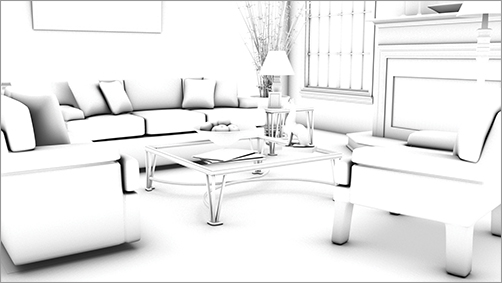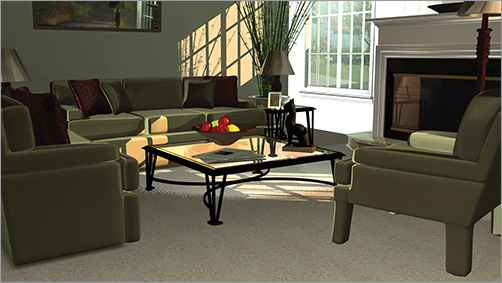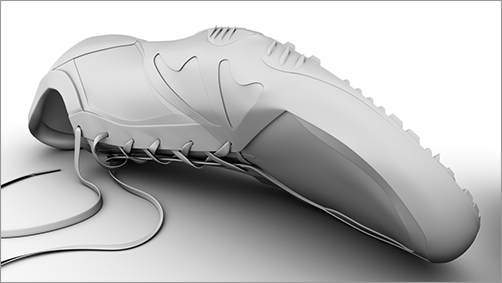














Gallery
Beginners’ Gallery
On the following pages, you’ll find some images from the book as well as images created by a few artists fairly new to Maya. We hope these images will inspire your own creativity as you become more familiar with 3D in general and Maya specifically.
Some of these artists have been using Maya for only a short period of time, and already they’ve been able to use the tools and techniques they’ve learned to channel their artistic eye and creativity into some beautiful and interesting imagery. (All images are used with permission.)


This still life from Chapter 10 was modeled and textured by Maya students Juan Guitierrez and Robert Jauregui. The fruit still life was modeled by Guitierrez using mostly polygons. The textures were created by Jauregui, who took this opportunity to learn all about UV texture space and mapping polygons because this was his first texturing experience inside Maya. Dariush Derakhshani laid out the scene, lit it, and rendered it to demonstrate some rendering concepts.


ABOVE: This pool table was modeled by Victor Garza to demonstrate modeling techniques in an introductory Maya class and to show the students how to be creative when combining surfaces to form a complex object. After Garza modeled the table, he and Dariush Derakhshani textured and lit the scene. BELOW: Dariush Derakhshani created this box full of marbles to test indirect lighting options with mental ray for Maya. The scene is made of very simple geometry, with the majority of the work going into lighting and rendering using mental ray for Maya.



ABOVE: This living room scene was modeled by Huyen Dang of The Art Institute of California—Los Angeles for a lighting class, and it was lighted by Dariush Derakhshani using global illumination in mental ray. The color render can be enhanced with the addition of an Ambient Occlusion pass to add detail and contact shadows. BELOW: The Ambient Occlusion render creates contact shadows and some further detail in the dark areas of the image to enhance the look of the color render. This pass is multiplied in a compositing package to add realism.


ABOVE: This is a photo of the real decorative box modeled and textured in Chapters 6 and 7, lit in Chapter 10, and finally rendered with mental ray for Maya in Chapter 11.
BELOW: The decorative box model from Chapter 6 was lit and rendered with mental ray for Maya and placed into a photographed background plate.


ABOVE: Brittany Biggs’ intent with her student film A Tall Tail was to create a 2D fairytale storybook in a 3D setting. She first drew the characters in their different views and scanned them to apply as textures to animatable cut-out models created in Maya. Here, she used lighting cleverly to create a moody atmosphere. Brittany created her characters with animation rigs to simulate stop-motion animation style as part of the aesthetic of her film. BELOW: Sepehr Dehpour from University of Southern California’s John C. Hench Division of Animation and Digital Arts (DADA) depicts a barren landscape for his fantastical character as part of his thesis film. He achieved the tactile feel of the stone through clever texturing.


ABOVE: Tayler Hudson from Art Institute of California—Los Angeles created this impressive library for her Advanced Materials and Lighting Class. Using carefully painted textures, she achieved a nice level of detail. BELOW: This is an otter character modeled and textured by Ben Knox at Piedmont Com munity College (North Carolina) for his 3D modeling class. Originally a Blender user, Ben is working in Maya on creating different otter face shapes to create a talking character.


ABOVE: Kami Solomon modeled this character at The Art Institute of California—Los Angeles in Maya and used ZBrush for texturing. BELOW: Brian Lee of USC’s John C. Hench Division of Animation and Digital Arts created this model of a golf shoe while attending his graduate-level courses. His choice to render the shoes as Ambient Occlusion black-and-white proofs showed off his clean models. A recent graduate, Brian focused on creating solid models because he knew that a good scene always starts with solid assets.
